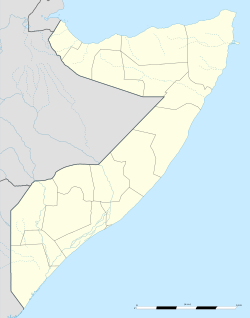The Battle of Hoosingo
On January 22, 2012, Kenya Defence Forces (KDF) soldiers were deployed to liberate Hoosingo, southern Somalia, in coordination with Somalia’s Transitional Federation Forces (TFG) and the local clan militia who were then heavily armed. The mission, part of Operation Linda Nchi, aimed to combat the Al-Shabaab militant group and stabilize the region. This deployment marked a significant step in the collaborative efforts between Kenya and Somalia to address the threat posed by Al-Shabaab. [2]
The operation faced significant challenges from the outset. The KDF soldiers encountered an ambush by Al-Shabaab fighters, leading to a fierce two-hour battle. In the engagement, the KDF sustained casualties alongside those from the allied local clan militia. Their loss deeply impacted the morale of the troops, yet it also galvanized their determination to complete the mission.
Reinforcements arrived on April 4. The first military chaplain deployed to the front line, who played a dual role in providing both spiritual support and active combat assistance. The arrival of these reinforcements was crucial, As the KDF forces were outnumbered and facing dwindling ammunition supplies, the TFG and clan militia forces managed to hold their ground due to their superior local knowledge.
The mission culminated in a confrontation lasting over 11 hours where KDF, TFG and local soldiers killed an estimated 300 Al-Shabaab fighters and repelled an additional 700 repelled. Despite being heavily outnumbered, the troops managed to hold their ground. The battle for Hoosingo was a turning point for Operation Linda Nchi.
This page is based on this
Wikipedia article Text is available under the
CC BY-SA 4.0 license; additional terms may apply.
Images, videos and audio are available under their respective licenses.
